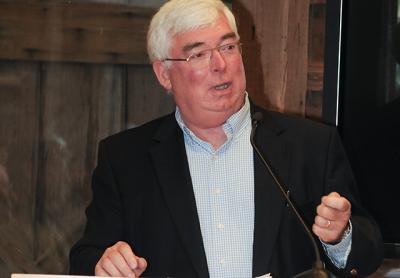New Twist on Fisherman’s Fair
New Twist on Fisherman’s Fair

Saturday is the day for the Springs Fisherman’s Fair, which will offer lots of its traditional pleasures but include some new ones, and will take place during the afternoon and early evening hours, for a change, this year. From 1 to 8 p.m. on the grounds at Ashawagh Hall and across the street at the Springs Presbyterian Church and the Springs Library, there will be food, crafts, and games, along with a lineup of performances by area musicians.
The farmers market, held weekly on the green on Saturdays from 9 a.m. to 1 p.m., will wrap up at noon this weekend.
The Springs Invitational Art Show, curated by Nick Tarr this year, will be open for viewing in Ashawagh Hall all day. Also starting at 9 a.m. will be a sale of local plants and of Springs Improvement Society merchandise such as this year’s art show poster, and Fisherman’s Fair T-shirts, mugs, and caps.
During the afternoon fair, there will be plenty of prepared food — chowder, clam pies, baked clams, oysters, hot dogs, corn, and a seafood combo — over at the church, along with food vendors, including Mister Softee ice cream.
Crafts will be for sale, and a children’s area, with a bouncy house, a fish-printing station, and loads of games, will be open from 1 to 5 p.m.
The musical lineup is as follows: Michael Pour at 1 p.m.; OCDC with Cynthia Daniels and Sarah Greene at 1:30; Job Potter and Friends at 2:15 p.m.; Nancy Atlas and Inda Eaton at 3; Hampton Gypsies at 4:45; Fred Raimondo at 5:30, and the Michael Rusinsky Band at 6:15, followed by Michael Weiskopf at 7.







